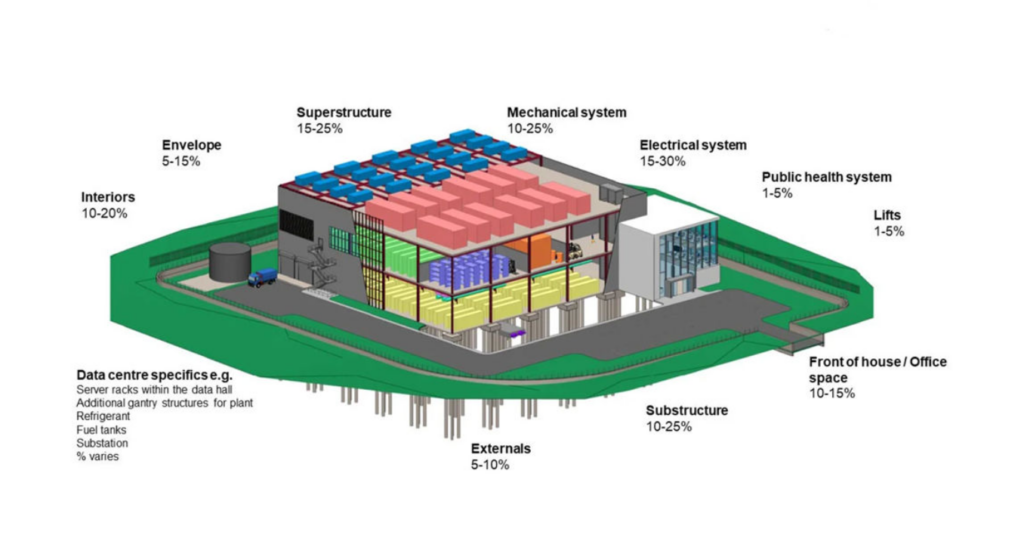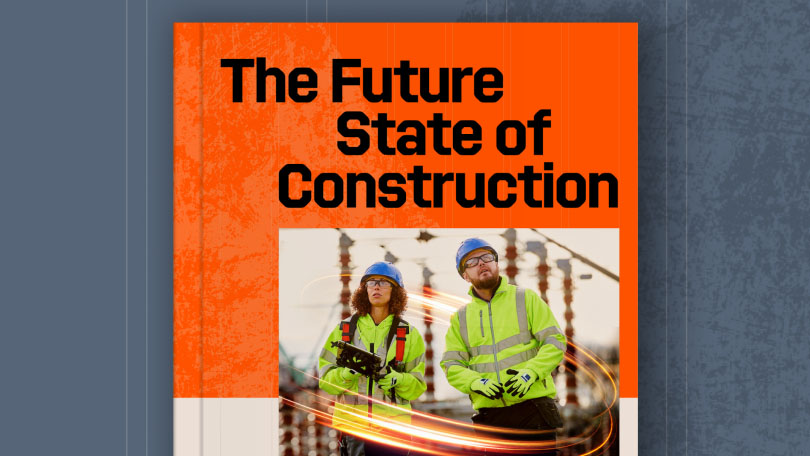— 4 min read
Ctrl + Build: The Carbon Code – Why Embodied Emissions Are The Next Big Test For Data Centre Builders

Last Updated Aug 28, 2025

Paul Acker
As a Strategic Product Consultant at Procore, Paul Acker boosts construction financials through expert Procore implementation and ERP integrations. He translates complex technical and financial problems into practical solutions, improving cash flow, reporting, and project margins for construction firms, developers, and subcontractors. Paul's blend of construction management, financial optimisation, and an MBA - backed by success leading multi-billion dollar system and data migrations - ensures technology delivers tangible commercial results and drives efficiency.

Nicholas Dunbar
Content Manager
62 articles
Nick Dunbar oversees the creation and management of UK and Ireland educational content at Procore. Previously, he worked as a sustainability writer at the Building Research Establishment and served as a sustainability consultant within the built environment sector. Nick holds degrees in industrial sustainability and environmental sciences and lives in Camden, London.
Last Updated Aug 28, 2025

Data centre operators are under pressure to decarbonise – and operational efficiency is no longer enough. The carbon locked into construction materials is now under the spotlight. For builders, that means new expectations, new workflows and a new kind of accountability on site.
Table of contents
Looking Beyond Operational Emissions
Carbon conversations in the data centre world tend to revolve around operations: cutting consumption, switching to renewables and improving performance.
And with good reason. In the United Kingdom, data centres already consume up to 2.5 % of the nation’s electricity, and this could rise to around 6% by 2030 – a trend flagged by industry analysts in Data Centre Review.
But there’s a quieter carbon story playing out behind the scenes: the emissions locked in before the servers even arrive.
Steel and concrete – two of construction’s most carbon-intensive ingredients – dominate the emissions profile of a typical data centre. Globally, cement and steel account for roughly 15% of all CO₂ emissions.
More than 60% of the world’s largest companies are now setting net zero targets. To achieve them, they must address all sources of emissions – including those embedded in the construction of buildings.
This puts new expectations on builders and contractors.

Visualisation of components to consider in WLCA for data centres and an approximate breakdown of lifecycle module A-C emissions.
Source: Adapted from Arup, 2022. Illustrative only.
Why Embodied Carbon Matters
Embodied-carbon emissions are generated across a building’s entire lifecycle – from raw-material extraction to the transport of products, from powering construction machinery right through to demolition and disposal.
The UK Green Building Council (UKGBC) estimates that buildings account for 25 % of the UK’s total greenhouse-gas emissions. Operational energy currently produces the majority, but UKGBC’s Whole-Life Carbon Roadmap projects that embodied carbon will represent about 50 % of built-environment emissions by 2035 as the grid decarbonises UKGBC.
In other words, as more buildings switch to 100 % renewable electricity, the proportion of emissions created during construction becomes the dominant slice of the carbon pie – effectively “locking-in” the majority of a project’s emissions before anyone steps through the door or switches on a server.

Embodied Carbon Sources Across the Building Lifecycle
Hidden Emissions, Big Impact
When it comes to data centre construction, one big source of emissions stands out: concrete. Concrete alone can represent up to 80% of a data centre’s embodied carbon emissions.
According to analysis by global architecture firm Gensler, reducing the amount of concrete used in a data centre through efficient structural design is the single most effective strategy. This is followed by material quality. High-performance aggregates and optimised mix designs can reduce the amount of cement needed.
But here’s the kicker. Gensler’s analysis suggests many of the emissions linked to supply, transport and rework aren’t captured – because they aren’t tracked.
Everyone’s focused on kilowatts. But before the first server goes in, you’ve already locked in tonnes of CO₂. That comes with reputational and regulatory risk.

Paul Acker
Cracking the Carbon Code
Some project teams are already embedding embodied carbon tracking into digital workflows. Using Procore, they can:
- Benchmark embodied carbon for materials and major plant
- Coordinate delivery schedules to align with lower-carbon material availability
- Report embodied carbon metrics alongside traditional quality and cost data.
The goal? A single source of truth and a clear audit trail for data centre operators under pressure to prove their ESG performance.
Table 1: Who Holds the Key to Embodied Carbon?
| Stakeholder | Key Responsibility | Embodied Carbon Opportunity | How Procore Helps |
|---|---|---|---|
| Developers and Owners | Set targets and carbon goals | Establish whole-of-project carbon benchmarks | Centralised platform for setting, sharing and tracking targets |
| Designers and Engineers | Specify structure, materials and performance standards | Optimise for low-carbon, efficient design, and EPDs | Embed carbon metrics into design reviews and tender documentation |
| Contractors and Builders | Procure materials, manage trades and quality assurance | Reduce rework, track product emissions, align with low-carbon materials | Quality assurance templates linked to emissions benchmarks and install data |
| Suppliers | Deliver certified low-carbon materials | Provide EPDs, innovate | Upload data, certifications and delivery information to platform |
| Sustainability Consultants | Monitor progress and report against benchmarks | Verify Scope 3 and lifecycle emissions, support ratings submissions | Export carbon data for BRE, NABERS UK or custom reports |
Key Takeaways
- Embodied carbon is the next emissions frontier in data centre delivery
- Constructors and contractors will be expected to track and reduce construction-phase emissions
- Structured digital workflows are essential to capture and report embodied carbon
- Procore enables carbon visibility across materials, trades and timelines.
As data centre operators face growing pressure to limit embodied carbon, constructors and contractors who deliver clarity and accountability through data will earn trust – and win work.
Categories:
Written by

Paul Acker
As a Strategic Product Consultant at Procore, Paul Acker boosts construction financials through expert Procore implementation and ERP integrations. He translates complex technical and financial problems into practical solutions, improving cash flow, reporting, and project margins for construction firms, developers, and subcontractors. Paul's blend of construction management, financial optimisation, and an MBA - backed by success leading multi-billion dollar system and data migrations - ensures technology delivers tangible commercial results and drives efficiency.
View profileReviewed by

Nicholas Dunbar
Content Manager | Procore
62 articles
Nick Dunbar oversees the creation and management of UK and Ireland educational content at Procore. Previously, he worked as a sustainability writer at the Building Research Establishment and served as a sustainability consultant within the built environment sector. Nick holds degrees in industrial sustainability and environmental sciences and lives in Camden, London.
View profileExplore more helpful resources

Control the Chaos: Standardising Document Workflows in Construction Projects
Document control and implementation play a central role in managing risk, meeting deadlines, and delivering projects to spec. As builds become more complex and teams increasingly disperse, the volume and...

Cost-Plus Construction Contracts in the UK
A construction cost-plus contract – sometimes called a cost-reimbursable or prime cost contract – reimburses all project costs and adds a fee to cover the contractor’s overhead and profit. UK...

Digital Construction Technology for Whole-Life Value
For decades, the construction industry has kept a narrow focus on capital cost — the one-time, upfront costs of a construction project. While in the short term this seems like...

UK Construction Progress Reports: Tools for Smarter Site Management
Construction progress reports track completed work, on site issues, costs, and safety so UK project teams can demonstrate progress, secure payments, and stay on programme. Accurate progress data is essential...
